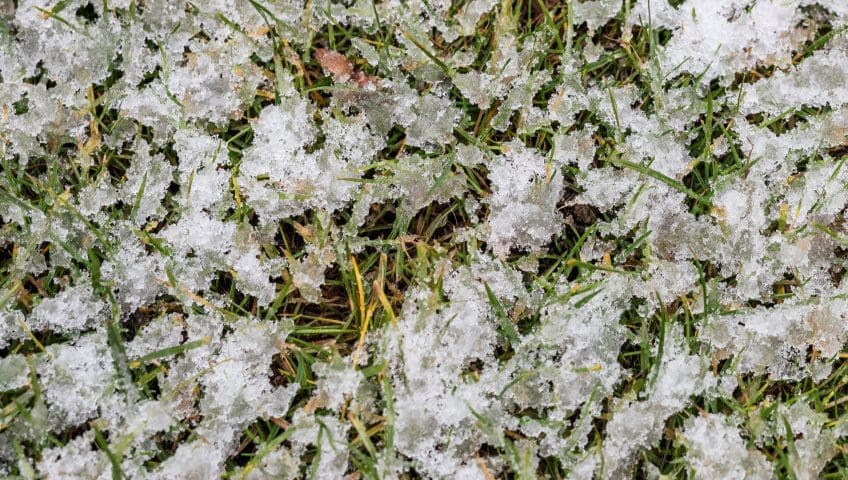Improved Germination Rates
Dormant seeding leads to higher germination rates because the seeds are already in the ground when soil temperatures reach the optimal range in early spring. Soil temperatures during this period are more consistent compared to fluctuating conditions later in the growing season, resulting in more successful seed establishment. Furthermore, dormant seeding reduces competition from weeds, as cooler temperatures in the dormant season suppress weed germination, allowing grass seed to grow without interference (Iowa State University Extension and Outreach, n.d.).
Lower Water Requirements
One of the key benefits of dormant seeding is its water efficiency. During winter, soil retains moisture better due to lower evaporation rates, and the grass seed does not require additional irrigation to germinate. Snow and winter precipitation provide a steady source of moisture, ensuring the seed is hydrated and ready to grow when spring arrives. This makes dormant seeding a cost-effective and environmentally friendly option for lawn establishment (University of Minnesota Extension, n.d.).
Reduced Stress on Grass
Grass seeded during the dormant season avoids competition with existing vegetation for essential resources like water, sunlight, and nutrients. This lack of competition allows the new grass to establish itself more easily. By the time the growing season begins, the dormant-seeded grass has already developed a strong foundation, reducing the stress on both new and existing turf (Michigan State University Extension, 2022).
Increased Drought Tolerance
Dormant seeding contributes to a healthier, more drought-resistant lawn. Grass seeded during the dormant season develops deeper root systems as it grows, enabling it to access water reserves in deeper soil layers. This deeper rooting reduces the need for frequent watering during dry periods, making the lawn more resilient and easier to maintain (Purdue University Extension, n.d.).
Improved Soil Structure
The freeze-thaw cycles of winter play an essential role in improving soil structure. As the soil expands and contracts, it creates small fissures that allow seeds to settle deeper and improve seed-to-soil contact. This enhanced contact ensures better germination and establishment, resulting in a dense, uniform lawn (University of Wisconsin-Madison Division of Extension, 2020).
Dormant Seeding is Effective
Dormant seeding is a highly effective method for establishing or renovating lawns. By leveraging the natural benefits of the dormant season, such as consistent moisture, reduced competition, and improved soil conditions, this technique ensures higher germination rates, lower water requirements, and long-term drought tolerance. With proper preparation and care, dormant seeding can provide a healthy, vibrant lawn for years to come.
References
Iowa State University Extension and Outreach. (n.d.). Dormant seeding lawns.
Michigan State University Extension. (2022). Dormant seeding for lawns: A winter lawn care option.
Purdue University Extension. (n.d.). Best practices for dormant seeding in turfgrass management.
University of Minnesota Extension. (n.d.). Lawn care: Dormant seeding and renovation techniques.
University of Wisconsin-Madison Division of Extension. (2020). Lawn establishment: The benefits of dormant seeding.

